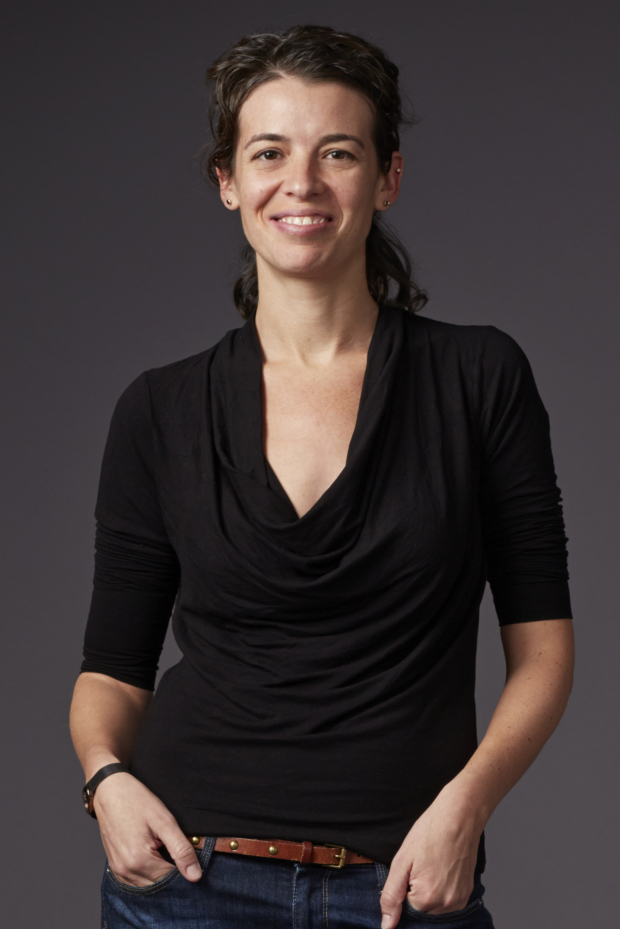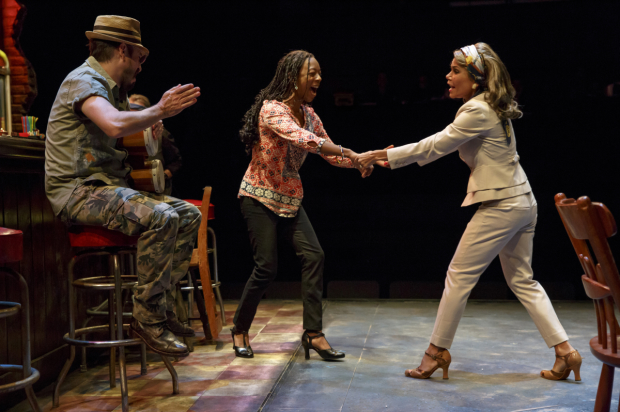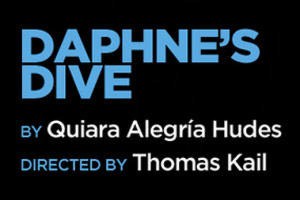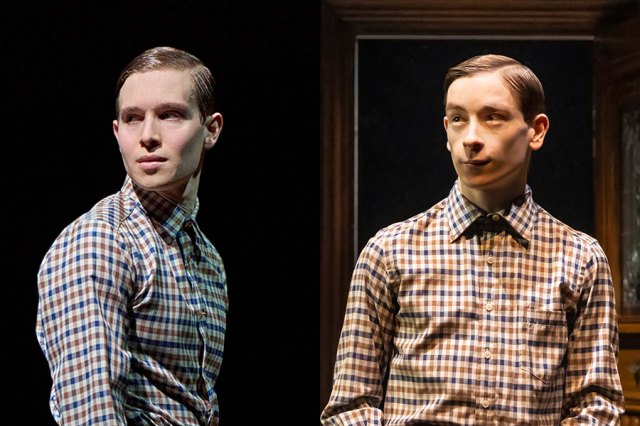Quiara Alegría Hudes Returns to Philly and Her Childhood Hangout in Daphne's Dive
The Pulitzer Prize winner’s world-premiere play draws on her formative years, and honors the artists who inspired her.
Quiara Alegría Hudes is a Pulitzer Prize winner for her play Water by the Spoonful, the middle work in a theatrical trilogy about a young soldier from North Philadelphia. With her new play Daphne’s Dive, which is now receiving its world premiere at the Pershing Square Signature Center, Hudes is returning to Philly. This time, however, the Philadelphians at the center of the story are Ruby and her adoptive mother, Daphne, proprietor of their neighborhood tavern.
"After finishing a trilogy of plays that was a coming-of-age tale of a young man, I wanted to more actively engage a few lead females," Hudes told TheaterMania, saying that she wanted to "put them in a room together" and make sure to pass the "Bechdel sniff test." To do so, the playwright drew on her childhood memories of hanging out at the Philadelphia bar that her stepfather owned. "It's a landscape that's been floating in my head for a long time," she continued, "It felt like a little bit of a community gathering spot."
Drawing on that familiar setting provided Hudes with the foundation of a play that not only meets (and surpasses) the Bechdel bar, but also achieves far more. Addressing themes of arts, politics, family, and even time, Daphne's Dive gives life to a cast of characters who illustrate the diversity of artists and activists in Philadelphia. During a recent conversation, Hudes discussed the men and women who inspired Daphne's Dive, her relationship with collaborator Thomas Kail (director of Lin-Manuel Miranda's In the Heights, for which Hudes wrote the book), and celebration in hard times.

(© Gregory Costanzo)
Is this a play that's been in the back of your head?
No, this one surprised me. It just tapped my shoulder. Something that I did want to write about for many years is the different kinds of artists that are in Philadelphia. There were some direct influences in this play that I had a feeling I would write about one day. There was a painter from Philadelphia named Pablo Labañino who paints large-scale paintings of trash that he's found, and he's a family friend. So he's an inspiration for this. In west Philly, there was an another artist in that vein…who would make repurposed musical instruments out of garbage and then do street performances. So the two of them really influenced me and their relationship to the things we throw away. There was also a performance artist named Kathy Change who was kind of a radical political thinker and performance artist and activist and she also very much influenced me.
Daphne's Dive opens and closes with a piano. Why do you choose to integrate music into your plays?
Music kind of provides a grace that words can't, at times. Another kind of category of artist [in Philadelphia] was the local musician. Right across the street from me, there was a flute player on the third floor, and when it was warm, he would always practice at his window with the window open, really for the children on the block. And we would sit and watch. He was sharing his tradition and his craft with us. This was a part of neighbors educating each other, essentially about who we are, what our values are. So in Daphne's Dive, there's this offstage character of the pianist who in some ways is providing that for the neighbors.
Was that community as idyllic as it sounds?
I was coming of age at a time when crack and AIDS had ravaged an entire community. Poverty was big. This is the setting in which these artists created celebration for us. So idyllic, I don't know about, but that celebration in hard times is something I'm really trying to explore with this play.
What's your collaboration with Thomas Kail like?
Working with Tommy Kail is really wonderful. He works unlike any director I've ever worked with. He empowers all of the collaborators in the room, the actors, the designers to be their fullest self.
I wrote the first draft of the play on my own and then when I had a sense of what this play was, it really was a play about a community. I think Tommy is particularly gifted at capturing the essence of the community, at getting the right actors into that community. So that's when I knew, "OK, I'm gonna get Tommy on it."
What makes Daphne's Dive unique within your body of work?
I think I'm very consciously playing with an exploration of time that I have not done in my plays before. You know, how does time kind of boost our illusions about who we are to each other? How does time help feed the lies we tell ourselves about what we remember and what we choose to forget?

(© Joan Marcus)









